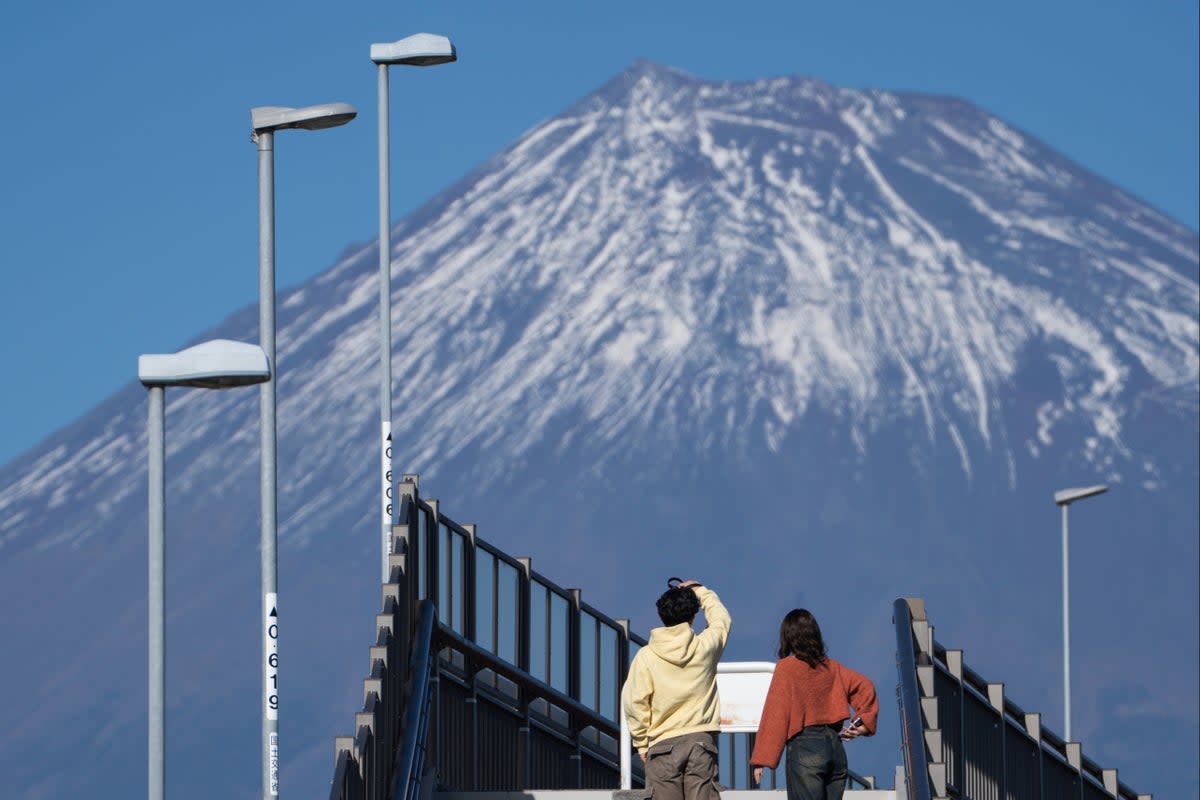Second Japan town blocks view of Mount Fuji in battle with problem tourists

A town in Japan is taking steps to stop tourists from causing trouble while attempting to capture the perfect picture of Mount Fuji – a month after a nearby destination was forced to take drastic measures.
Fuji City, in the Shizuoka prefecture, is home to ‘The Fuji Dream Bridge’, which aligns directly with the outline of the famous mountain – and from some angles the steps look like they lead right up to Japan’s highest peak.
Vehicles drive across the bridge, which has a walkway next to it for use by pedestrians – but seemingly so desperate for the image, many snappers have been straying into the road.
And despite being used by locals for years without issue, an influx of visitors onto the bridge has caused disruption to the community, with complaints over illegal parking, litter, loud noise and even tourists defecating in public.
Those desperate for the best shot have even stood in the middle of the traffic to take photos, SUT-TV reports, and there has also been damage to property hit by vehicles.
Despite signs in various languages warning people not to cause incidents or run across the road, the incidents have led officials into installing a barricade to block would-be photographers.
A temporary fence stretching 400m along the road is currently in place, with a permanent barrier reaching 1.8 metres to be installed in July, according to local media.
The swelling in visitors to Fuji City is being blamed on social media influencers.
“It all began in December last year when a foreign influencer put images on Instagram,” Miyu Toyama, from the city government’s Exchange Tourism Division, told the South China Morning Post.
“The image soon spread and now, almost all the people who visit the bridge are foreigners, not Japanese.”
It’s “becoming a problem”, she added, with people arriving “when it is raining or if Mount Fuji is covered in clouds, which causes problems because they stay longer, hoping that it will clear and that means lots of people can be there at the same time”.
“We are happy that people want to visit Fuji City because there are not so many tourists sights here and we want more visitors to come but we need to find a way to make sure the problems are reduced.”
A similar tactic to block the view of Mount Fuji was employed by Fujikawaguchiko last month, after it also faced tourists littering, crossing the road with busy traffic, ignoring traffic lights and trespassing onto private property.
The town previously tried other methods – signs urging visitors not to run into the road and to use the designated crosswalk in English, Chinese, Thai and Korean, and even hiring a security guard as crowd control – but, as in Fuji City, nothing worked.
However, just one week after the black mesh screen was installed, tourists eager to see the stratovolcano started poking holes through it.
A security guard stationed at the convenience store where the viewing spot has been blocked off said he noticed small holes started appearing in the morning or evening while no one was watching.
Also in May, new rules came in for those climbing Mount Fuji. Only 4,000 climbers will be allowed to enter the trail per day, with 3,000 slots available for online booking priced at 2,000 yen (£10), and the remaining 1,000 open to be booked in person on the day of the climb.
Foreign visitors have flocked to Japan since the pandemic border restrictions were lifted, in part due to the weaker yen.
Last year, Japan had more than 25 million visitors, and the number this year is expected to surpass nearly 32 million, a record from 2019, according to the Japan National Tourism Organization.


